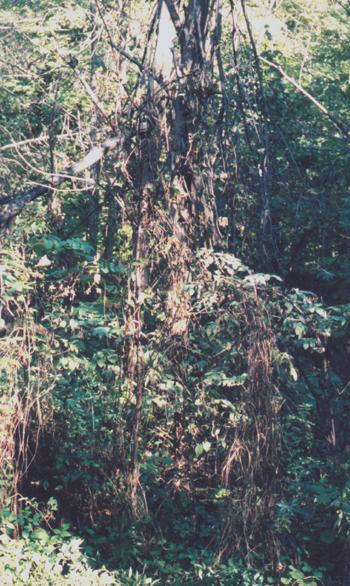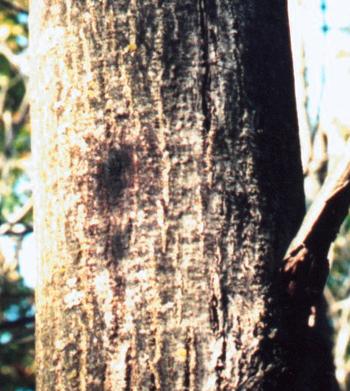The fungus is known to be spread with nut husks and wood, but its rate of spread indicates that at least one wide-ranging carrier for the spores exists - probably flying insects. It is considered useless to count on isolation of a tree to protect against infection - instead fungus resistance must be developed within the butternut genome by selection or hybridization.
The vines have been removed, to ensure that the trees' growth is limited only by the canker. The plantation will be used as a test plot for natural seeds from trees that are believed to show some resistance to canker. This will take time - non-infection or successful containment of the canker is not considered reliable until the tree has reached 25 cm DBH or so. Any that survive the canker exposure here will be well worth studying further.

The plantation as found, everything covered with vines

The black smut of early butternut canker